

COSTA BRAVA

The Costa Brava is the name given to the coastal area of Spain that starts at the mouth of the river Tordera in Blanes and ends at the French border in Portbou. Bordered on the north by the Vermilion Coast and south to the Costa del Maresme. This coastal strip has an area of 214 km and is comprised of the Catalan regions of Alt Empordà, Baix Empordà and La Selva. It is situated in the province of Gerona, in the Autonomous Community of Catalonia in Spain.
The geographical location is known as Costa Brava has been, for centuries, a passage and settlement for many peoples and cultures, and the gateway to the Peninsula from Mediterranean Europe. The wealth of historical remains of the area are testimony to this fact. The first traces of activity that we belong to the people of the Paleolithic.
Going deeper into the story, we find the presence of Indo-European peoples who left their mark on megalithic constructions that can be found very close to Roses in the Gavarres and the Mountains Rodes. These monuments have an estimated 5000 years old B.C. and can found in the counties of Pla de l'Estany, Cerdanya, La Selva, Baix Empordà and Alt Empordà. Millennia later, we observed the presence of colonizing peoples like the Greeks or the Romans.
During the third century BC. Iberian territory was an important scene of military operations that kept Carthaginians and Romans called Punic Wars. At the time when the Carthaginians were finally defeated, the Romans took control of the area and progressively in the Iberian Peninsula, but had to constantly fight against local resistance. One such native tribes were indigetes, which was located in the coastal area now occupied by the Costa Brava.
Plus de 30% de la superficie totale des régions de Girona est protégé en raison de ses attraits naturels. Les zones naturelles les plus importantes de la Costa Brava sont:
PARQUE NATURAL DE CAP DE CREUS
It is one of the most important natural areas in Catalonia. Is located in the geographical accident of Cap de Creus, the point of the eastern Iberian Peninsula. Its territory belongs to the municipalities of Cadaqués, Port de la Selva, La Selva de Mar, Llançà, Vilajuïga, Pau, Palau-Saverdera and Roses. Space and earth, the sea, the park covers 13,886 hectares and receives about 435,000 visitors each year. The strong winds that roam the area, especially the Tramuntana, and waves have shaped this part of the coast, forming a very steep profile. The entire territory, we find sparse vegetation, but a rich fauna.

Foto: www.gencat.cat
L'Empordà Natural Park, is a set of marshes generated at the end of the course of the river Muga and Fluvia. Since October 1983 is considered Site of Natural Interest. The park covers an area of approximately 4,730 hectares, of which 825 are strictly protected nature reserve full. The park is located in the vicinity of the Alt Empordà and municipalities make Castelló Empurias San Pedro Pescador, Palau-Saverdera, Perelada, Pau, Pedret and Marsa, La Escala, Roses and The Armentera. His main interest lies in the richness of flora and bird life especially, especially immigration.

Foto: www.gencat.cat
Illes Medes; Small archipelago located 900m. Estartit, on the beach of L'Estartit. They are practically the only islands off the coast of Catalonia and are formed by the elevations of the Sierra Estartit. There are a total of seven islets with rocky bottoms and underwater caves that make it a perfect place for scuba diving. The area is considered for its rich marine reserve ecosystem, favored for its proximity to the mouth of the river Ter.

Foto: www.gencat.cat
SITES OF INTEREST
TOSSA DE MAR:
Tossa de Mar is a municipality belonging to the county of La Selva, in the province of Girona, on the Costa Brava so this is a perfect place to enjoy its beaches. In the bay of Tossa is a small promontory on the beach, in which a medieval walled city lies, called the Vila Vella, who has seven round towers. Its origin is estimated in the twelfth century and was built to prevent pirate attacks. Inside are the remains of a church and the palace of the governor of the XIV century. Near the complex there are archaeological finds of what was a Roman villa of the fourth century, the Roman villa of Els Ametllers. It has a municipal museum within the enclosure, with archaeological collections, local and foreign painting, sculpture. It has information on Paleolithic remains located in the area still in situ, that is why it is thought that in prehistoric times was a pretty important enclave . In Roman times , and other less important towns , we are left with the Vil · la Romana dels Atmetllers in Avda Peregrí , 5-13 . This is one of the most important towns of the former province of Tarraco , especially cultivation of the vine and the exportation of wine consumer .Moreover, we find all the old part of the city surrounded by walls belonging to medieval times. In this same era as attractions also see Can Magi Tower or Torre dels Moros , La Capella de la Verge Socors , Can Can Leandro Ganga or one of the first extramural buildings, fortified by its location near the sea and tried prevent attack by pirates and L' Antic Mas Rabassa with watchtower.Other interesting places to visit are the Church of Tossa de Sant Vicenç enlarged in the XVIII century, the Culture House (former Hospital de Sant Miquel ), the Sanctuary of Sant Grau, located 15 km from Tossa de Mar, in neo-Gothic style, House by Antoni Sans of Fern , a disciple of the great architect Puig , where a great aesthetic eclecticism is appreciated. Finally , it is advisable to walk around the streets inside the walls and climb the lighthouse where you can enjoy fantastic views. Outside the walls is the district of Sa Rocket, a traditional neighborhood of very nice visiting fishermen.

Foto: www.gencat.cat

Foto: www.gencat.cat
http://www.infotossa.com
Oficina de Turismo de Tossa De Mar
Av. Del Pelegrí 25 – Edifici La Nau
17320 Tossa de Mar (Girona)
Tel. 972 340 108
GIRONA:
It is a capital of the province and the region of Gironés in Catalonia. The city is crossed by ther rivers Ter, Guell, Onyar and Galligants, at an altitude of 75 m above sea level. Your Old Quarter or Barri Vell is one of the most evocative of Catalonia , with only monumental elements in Europe. It is bounded on the east by the so-called Paseo de la Muralla, the coastal path of the old Carolingian walls (IX ) and the late Middle Ages (XIV and XV). Its monuments include the widest Call ( Jewish Quarter , one of the best preserved in Spain ) and their famous colorful houses Onar and Cathedral, with a single nave , the world. The history of the city dates back to the settlements of the Iberian tribe indigetes in the surrounding villages and close the Llano de Gerona. By the 77 th. C. Pompey built an oppidum on the Via Heraclea and the Roman occupiers originally founded Gerona , called in Latin Gerunda. The new city was repopulated with Gerunda villagers of San Julián de Ramis became an important center of the region , with the articulation of a Roman ager surrounding the city. Although Gerunda was inside , away from the coast , had a good connection with the port of Empurias. The city had its first period of glory as the united diocese to the metropolitan see of Tarragona , followed ruralization that raged throughout the ancient Roman Empire because of the general ruin and loss of weight of the population of Church
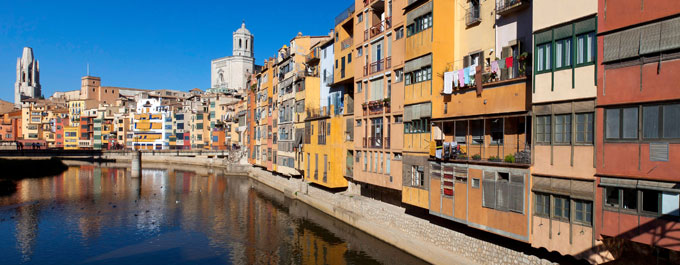
Foto: www.girona.cat
La Cathedral
Gerona Cathedral dedicated to St. Mary, is located at the highest point in the city , has the widest Gothic nave in the world , with a total width of 22.98 meters. Its construction began in the eleventh century in Romanesque style , following in the XIII Gothic, retaining only the Romanesque cloister of the twelfth and the tower dating from the same period of 1040, was completed in the eighteenth century.
From the beginning of Christianity throughout this area, one the city of Gerona was a bishopric who settled in the church of Santa María, while carrying the shrine of St. Felix deacon martyr, this shrine was built over the grave of the martyr, near the city wall. This small church of San Félix received Christian worship in place of Santa Maria when the Arabs took it over to make it more mosque in the year 717. Later, in 785, Gerona was conquered by the Franks, then under the authority of Charlemagne. In 882 the first community of canons formed and in 908 the church was again consecrated. The facade is Baroque and was built in 1730. The central access stairway was built in 1607. Outside the cathedral Gothic portico San Miguel, located north porch and south of the Apostles, the fourteenth century and to which was added a few sculptures in the fifteenth century is preserved. We must also mention the Romanesque cathedral of the eleventh century episcopal located on the main chapel, the altarpiece, silver-gilt and enamel, a masterpiece of Gothic goldsmith by Bartomeu between 1320 and 1357. In the treasury of the cathedral you can admire the tapestry of Creation and various sculptures. One of the main architects (and sculptor) of the seventeenth century was Pere Costa i Cases.
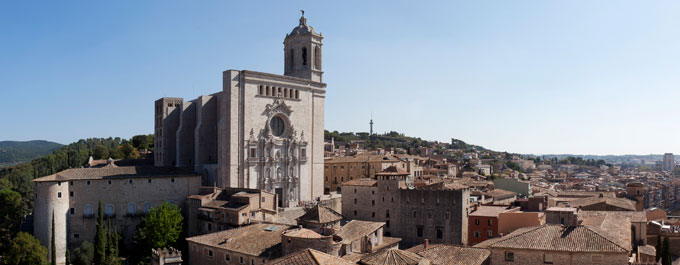
Foto: www.girona.cat
Sant Pere de Galligants
Sant Pere de Galligants is Benedictine abbey in Girona, Catalonia. Since 1857, it is home to the Archaeological Museum of Catalonia in the city. The monastery was built from 992, outside the walls of Girona, when Ramon Borrell, count of Barcelona gave to the monks rights over the quarter of Sant Pere. The monks held the ruler of the quarter until 1339, when King Peter IV of Aragon restored it to Aragon. nIn 1117 Ramon Berenguer III of Barcelona united the monastery to the Abbey of Sainte-Marie de Lagrasse, in what is now France, though Sant Pere kept an abbot of his own and a large degree of autonomy. Sant Pere was never a big community, and the church was not the local parish, and only baptisms were held in the monastery. In 1362, when the monastery was enclosed within the city's walls, it was redesigned to a more defensive shape. It started to decay from the 15th century, and in 1592 it was united to the also decaying monasteries of Sant Miquel de Cruïlles and Sant Miquel de Fluvià. In 1835 the monastery included an abbot and four monks. It was declared a national monument in 1931. The small cloister is an example of Catalan Romanesque architecture. The northern gallery dates to 1154, while the remaining ones are from 1190. The capitals of the columns have motifs very similar to those in the cloisters of Sant Cugat del Vallès or in theCathedral of Girona. Some depict scenes from Jesus' life, while others show typical Romanesque elements such as lions or sirens.
http://en.wikipedia.org/wiki/Sant_Pere_de_Galligants
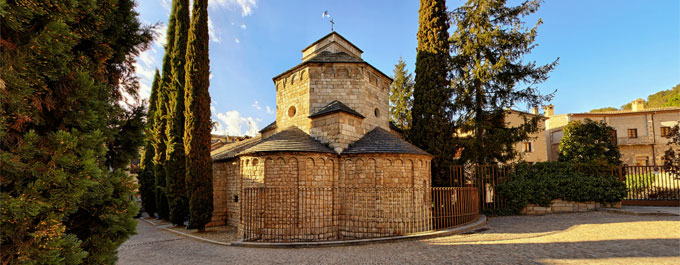
Foto: www.girona.cat
Sant Feliu
Originating in the earliest days of Christianity, retains much of the Romanesque building completed later with ships and gothic and a baroque facade (XI-XVII). Eight extraordinary Roman and early Christian graves are its main attraction. Houses the offices of the parish church of Sant Feliu Girona Bishopric, so named because this was the main temple of Gerona before the construction of the cathedral. Its construction, in honor of the martyr St. Felix, was extended from the twelfth to the seventeenth century and retains much of the Romanesque building completed later with ships and Gothic and Baroque facade covered.
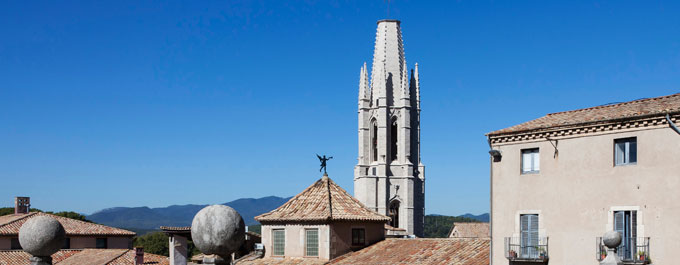
Foto: www.girona.cat
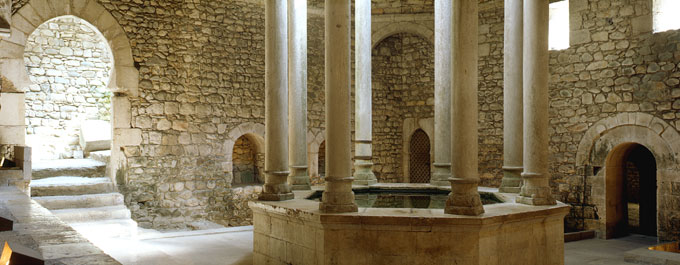
Foto: www.girona.cat
Jewish Heritage (El Call)
Although most traces of Girona's rich Jewish history were wiped out when the Jews were expelled from Spain, a few remain. On Carrer de Sant Llorenc, a rectangular indentation that once held amezuzah can be seen on the doorway of an old building. Farther along is the Centre Bonastruc ça Porta and the Catalan Jewish Museum. The Bonastruc ça Porta project started in the 1970s, when it became fashionable to renovate properties in the old town. http://en.wikipedia.org/wiki/Girona#Jewish_Heritage
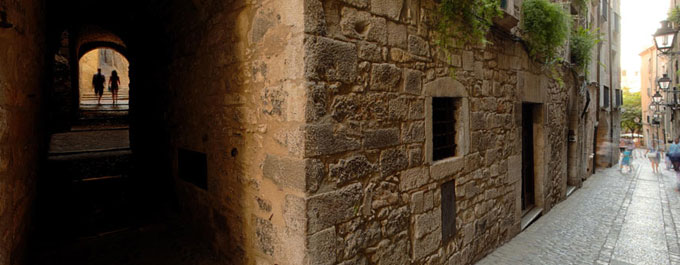
Foto: www.girona.cat
Casas de l'Onyar
Characteristic of Girona are the picturesque houses overlooking the river Onyar. These were built over many years and give the flavour of a small Mediterranean city. The façades are painted according to a palette created by Enric Ansesa, James J. Faixó and the architects Fuses and J. Viader. One of these houses (at Ballesteries 29, Girona) is Casa Masó, the birthplace of the architect Rafael Masó and an example of Noucentisme in Girona. The river façade can be recognised by its unique white color.

Foto: www.girona.cat
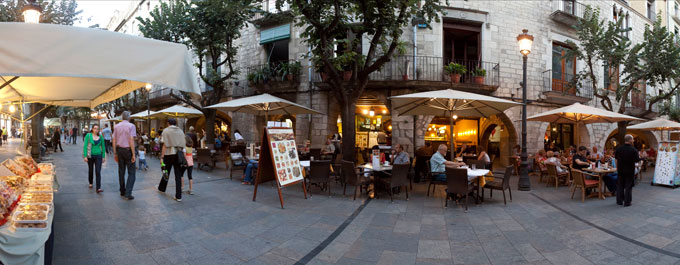
Foto: www.girona.cat
The Plaça de la Independència, which refers to the War of Spanish Independence against Napoleon Bonaparte, is one of the best known and most frequented places in Girona. Located in Mercadal district in the city center, is also known as Plaça de Sant Agustí, because formerly the Convent of Sant Agustí had been raised there. The interest of the square lies 19th-century style, despite it is surrounded by austere identical neoclassical buildings with porches dedicated to the defenders of the city of Girona during the sieges of 1808 and 1809. However, the symmetrical proportions of square corresponds more to current interventions than its architectural past. The municipal architect Marí Sureda was the first who thought up an arcaded square with loops closed and neoclassical, with some buildings having the same aesthetic proportions. The urbanization of the area only followed in part their schemes. The construction of the first theaters in this city, broke down the idea of Martí Sureda. Until the 18th century, what that architect had imagined could not be completed. This part of the city in Noucentisme style is a romantic and timeless creation, from one century to another, nowadays captivates inhabitants and visitors. Today has great activity due to the gradual opening of cafes and restaurants. On this, some business are well known for its history like the Café Royal, Cinema Albéniz and Casa Marieta.
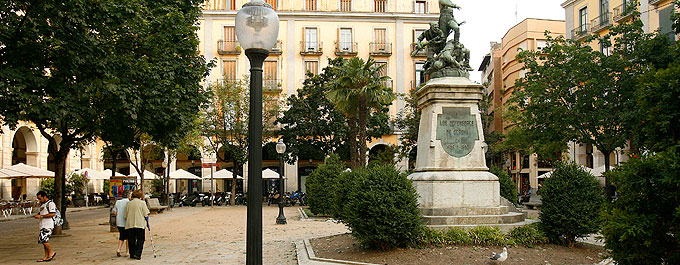
Foto: www.girona.cat
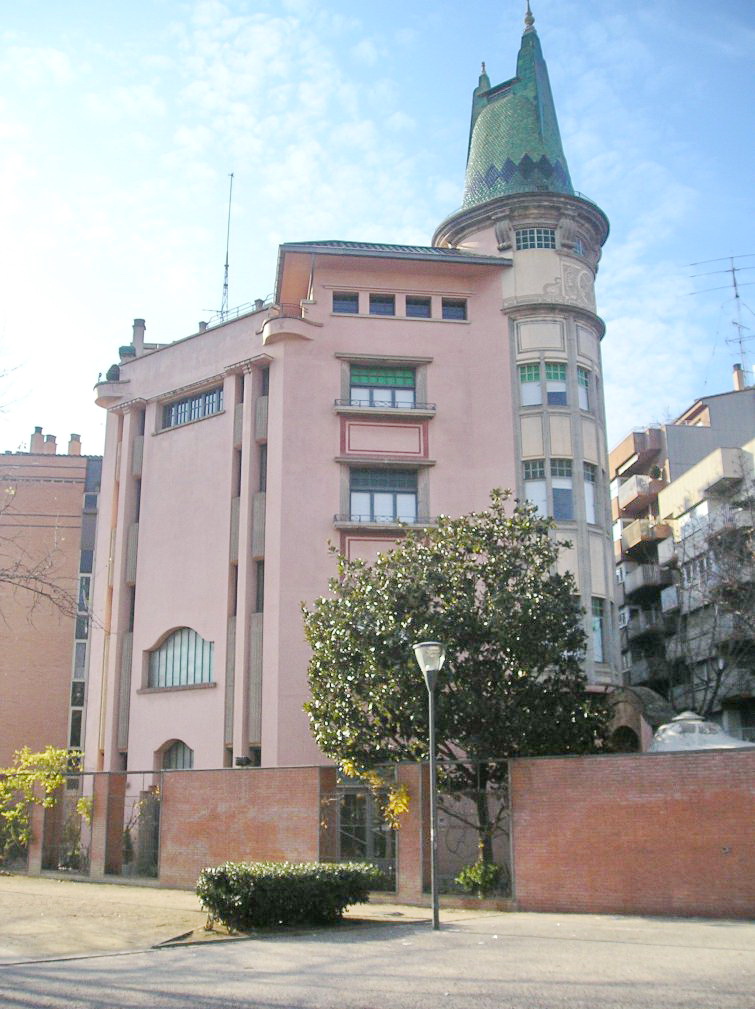
Foto:www.epdlp.com
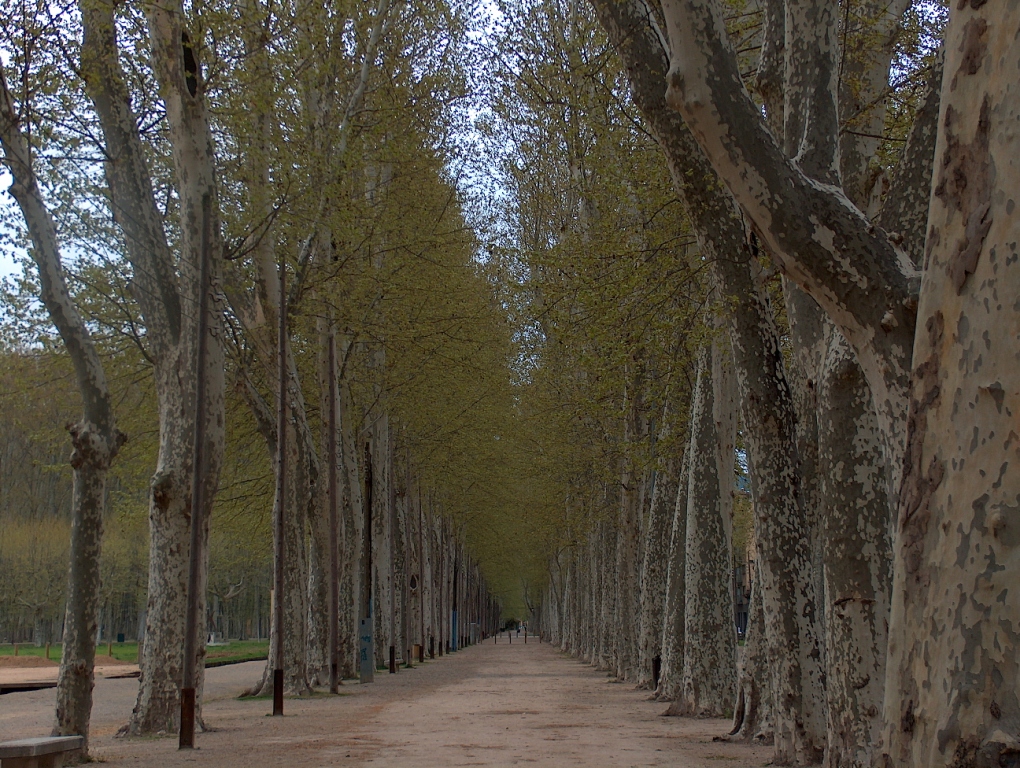
Foto:www.wikipedia.org
Barcelona is the capital city of the autonomous community of Catalonia in Spain, and its 2nd largest city, with a population of 1.6 million within its administrative limits. Its urban area extends beyond the administrative city limits with a population of around 4.5 million, being the sixth-most populous urban area in the European Union after Paris, London, the Ruhr, Madrid and Milan. About five million people live in the Barcelona metropolitan area. It is the largest metropolis on the Mediterranean Sea, located on the coast between the mouths of the rivers Llobregat and Besòs, and bounded to the west by the Serra de Collserola mountain range, the tallest peak of which is 512 metres (1,680 ft) high. Founded as a Roman city, in the Middle Ages Barcelona became the capital of the County of Barcelona. After merging with the Kingdom of Aragon, Barcelona continued to be an important city in the Crown of Aragon. Besieged several times during its history, Barcelona has a rich cultural heritage and is today an important cultural centre and a major tourist destination. Particularly renowned are the architectural works of Antoni Gaudí and Lluís Domènech i Montaner, which have been designated UNESCO World Heritage Sites. The headquarters of the Union for the Mediterranean is located in Barcelona. The city is known for hosting the 1992 Summer Olympics as well as world-class conferences and expositions and also many international sport tournaments.


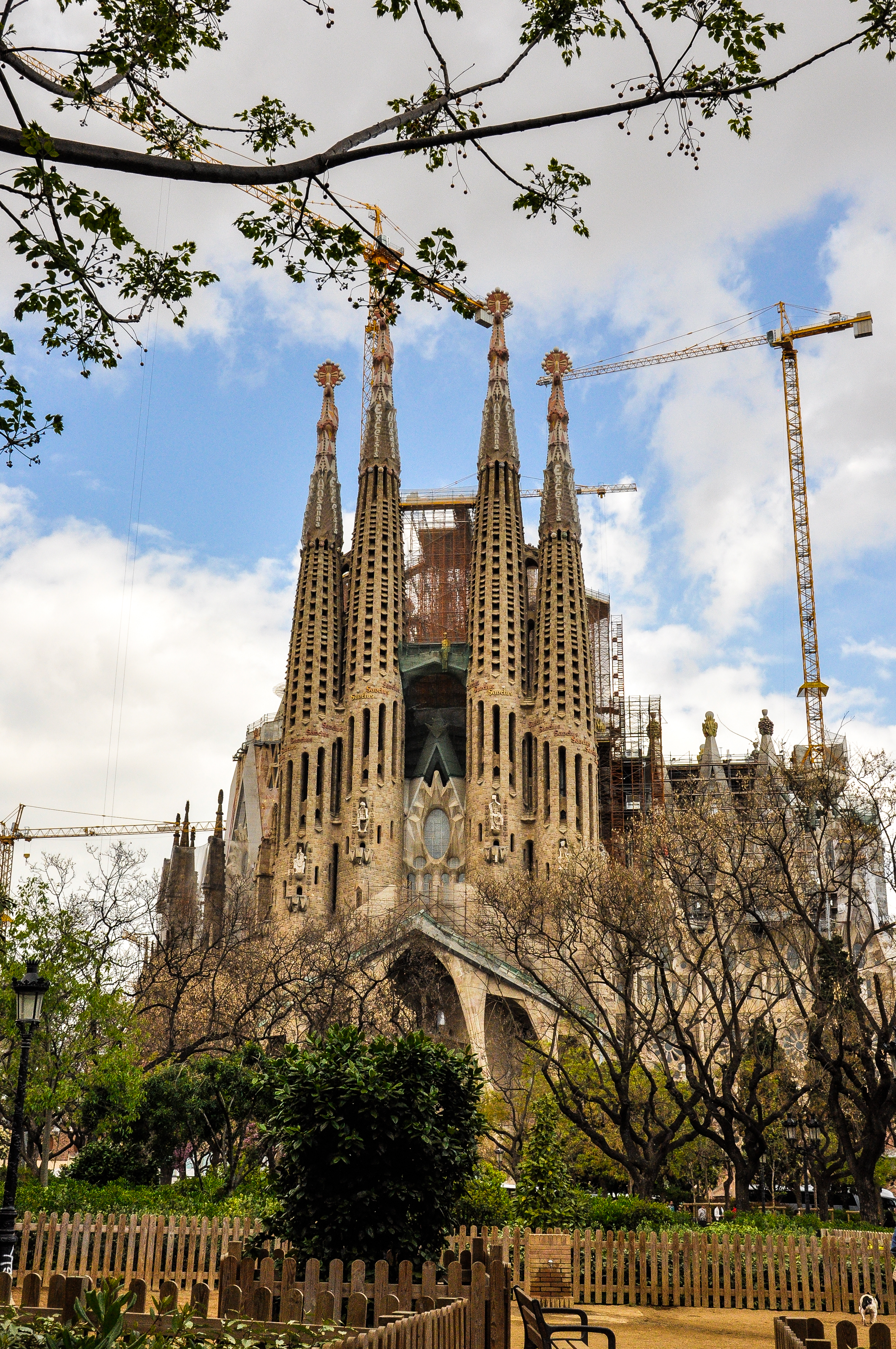
Empúries was a town on the Mediterranean coast of the Catalan comarca of Alt Empordà in Catalonia. It was founded in 575 BC by Greek colonists from Phocaea. It was later occupied by the Romans (but in the Early Middle Ages, when its exposed coastal position left it open to marauders, the town was abandoned. The ruins are midway between the Costa Brava town of L'Escala and the tiny village of Sant Martí. There are good car parking facilities and the site may be reached by a traffic-free coastal walk from L'Escala.
Figueres is the capital of the comarca of Alt Empordà, in the province of Girona, Catalonia. The town is the birthplace of artist Salvador Dalí, and houses the Teatre-Museu Gala Salvador Dalí, a large museum designed by Dalí himself which attracts many visitors. It is also the birthplace of Narcís Monturiol i Estarriol, inventor of the first successful machine-powered submarine.
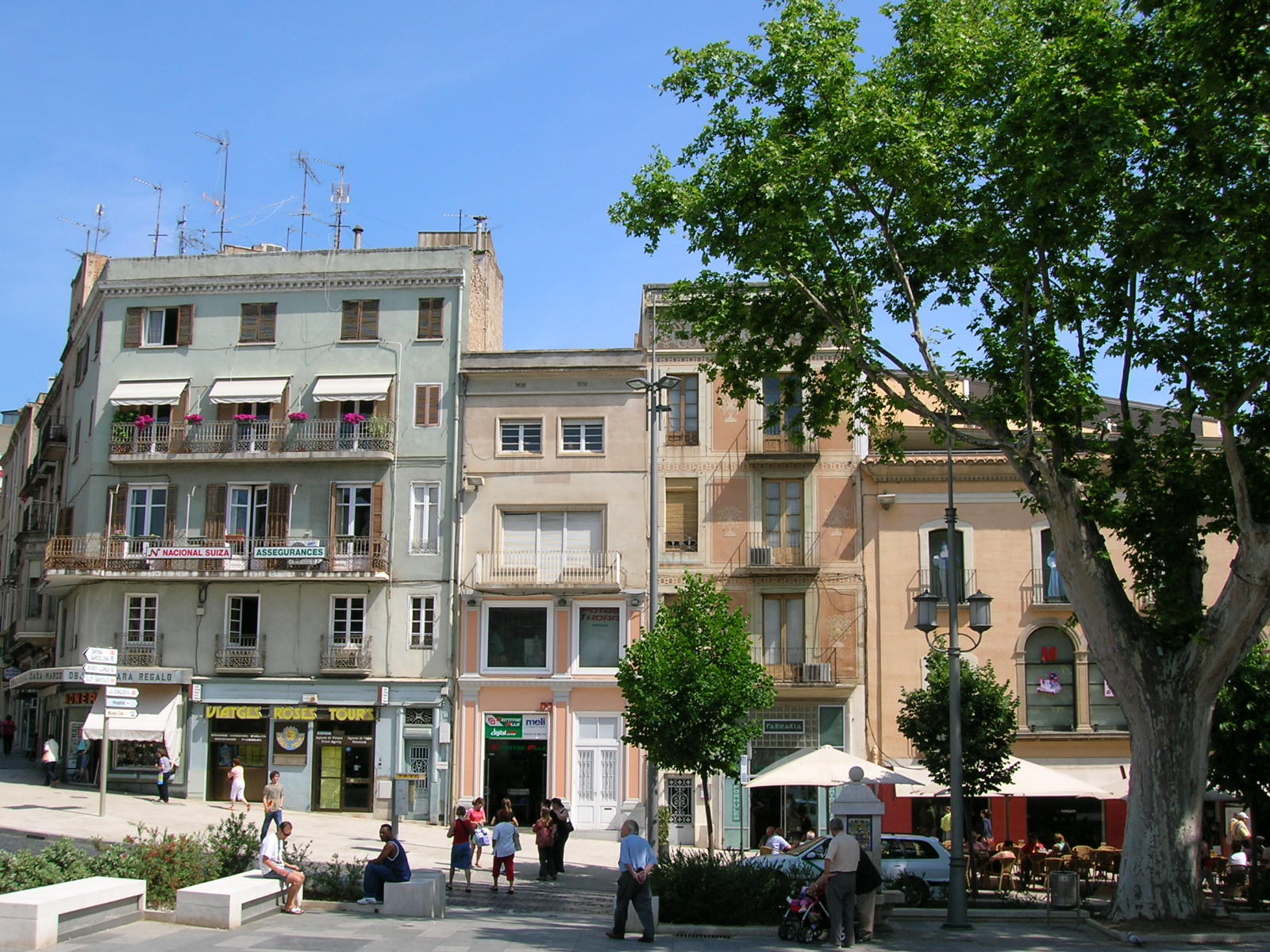
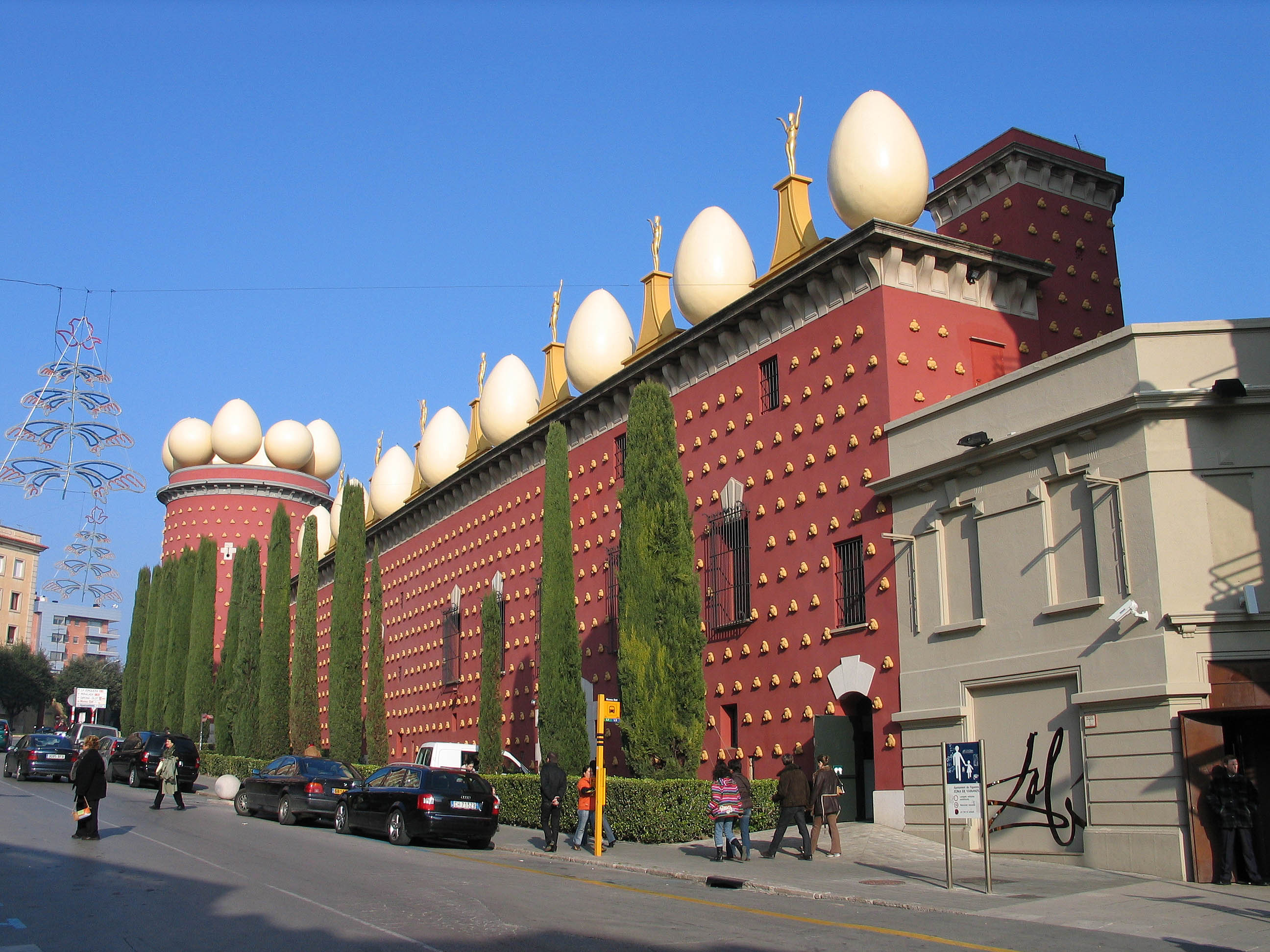
,_fa%C3%A7ana_de_la_Rambla.jpg)
is situated on a hill in Figueres, Catalonia at the end of Pujada del Castell. It is a large military fortress built in the eighteenth century under the orders of several military engineers, including Peter Martin i Cermeño Juan Martin Cermeño. It is the largest monument of Catalonia.


La Cala de Sa Boadella is practically the only virgin beach of Lloret de Mar. Located in a privileged enclave accessible through a pine forest between Santa Clotilde Gardens and Santa Cristina Beach, this cove has a natural charm worth visiting . Its crystal clear waters, golden sand and quiet of an untapped corner, make this beach an ideal place to enjoy your visit to the Costa Brava.
The seabed is shallow in the first few meters from the shore and full of rocks, caves and natural caves as we head into the sea. It is an ideal place to spend the day with family practicing water sports such as snorkeling or kayaking site. An idyllic and quiet a few meters away from the crowded beaches of Lloret Fenals or solution In the part of the far beach access road nudism is allowed. The cove is equipped with showers and a terrace bar serving drinks, ice cream and snacks. http://www.visitacostabrava.com/es/lloret-de-mar/rincones/la-cala-de-sa-boadella
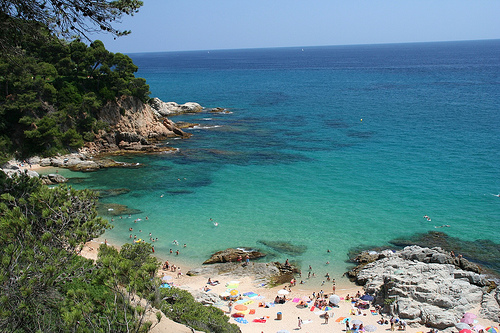 http://blog.quehoteles.info/wp-content/uploads/2009/07/playa-de-la-boadella-lloret-de-mar.jpg
http://blog.quehoteles.info/wp-content/uploads/2009/07/playa-de-la-boadella-lloret-de-mar.jpg http://www.spaincoast.es/cataluna/GERONA%20/LLORET%20DE%20MAR/lloret-de-mar.jpg
http://www.spaincoast.es/cataluna/GERONA%20/LLORET%20DE%20MAR/lloret-de-mar.jpg
Tossa de Mar (Catalan pronunciation: [?tos? ð? ?mar]) is a municipality in Catalonia, Spain, located on the Costa Brava, about 103 kilometres north of Barcelona and 100 kilometres south of the French border. It is accessible through Girona Airport, some distance north. http://en.wikipedia.org/wiki/Tossa_de_Mar
 http://imagenes.nationalgeographic.com.es/medio/2012/06/25/tossa_de_mar_600x400.jpg
http://imagenes.nationalgeographic.com.es/medio/2012/06/25/tossa_de_mar_600x400.jpg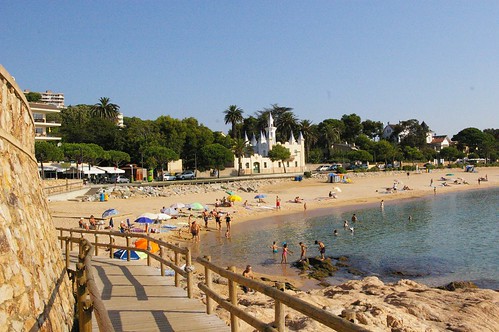
 http://www.grupsarbus.com/fotostrayectos/17/platja-daro.jpg
http://www.grupsarbus.com/fotostrayectos/17/platja-daro.jpg